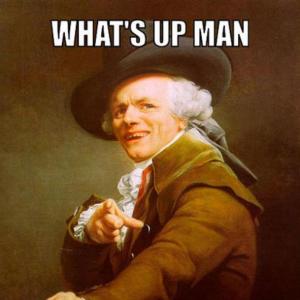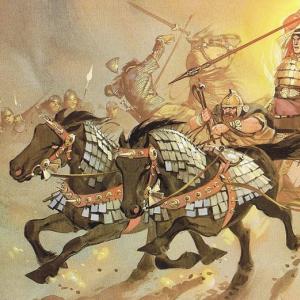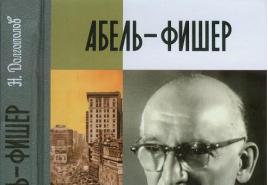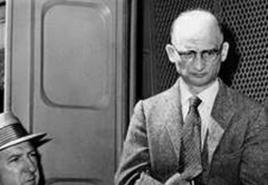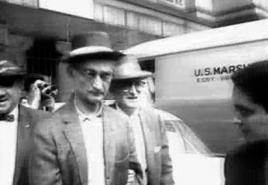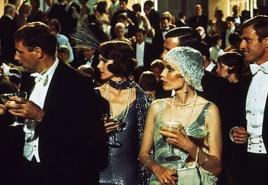Burylin dmitry gennadievich short biography. DI
Honorary Citizen of the city of Ivanov
The title was awarded by the decision of the Ivanovo City Duma N349 dated 06/27/2000. (posthumously)
A rich and extraordinary personality, he subtly felt art, wrote poetry himself, worked for a long time on a book on the history of Ivanov-Voznesensk, traveled a lot, acquiring valuable exhibits for his beloved brainchild - the museum. According to the spiritual will of D.G. Burylin, his collections were transferred to the city.
... "My favorite collection of books, coins and things ... should be the property of our hometown of Ivanovo - Voznesensk and should never be sold or plundered (it was acquired by great need and labor)."
Burylin Dmitry Gennadievich (1852 - 1924). Hereditary honorary citizen of the city of Ivanovo-Voznesensk. Manufacturer. Maecenas. Collector of "curiosities and antiquities". Founder of the Ivanovo Museum.
The Burylins' merchant family is native Ivanovites, descendants of serfs. The grandfather of Dmitry Gennadievich - Diodor, being a printing serf for Count Sheremetev, acquired a light-house and in 1812 founded a printing factory, becoming the founder of the Burylins' entrepreneurial and factory business.
It is noteworthy that it was the grandfather who founded the tradition of family collecting. After his tragic death, in 1864, the collection of "Slavic Russian books of church printing", "old manuscripts and ancient icons" passed to his 12-year-old grandson Dmitry. Gathering "rarities" becomes the meaning of DG's life. Burylin. He later said: "The museum is my soul, and the factory is a source of livelihood and its replenishment." Having received only a home education, Burylin by his abilities was a real Russian nugget. Inquiring mind, seething energy; hard work were the main driving forces of his work.
In 1876 D.G. Burylin joined the merchant class of the II guild, and in 1899 - the first guild. In 1909, in Ivanovo-Voznesensk, the "Partnership of DG Burylin's Manufactories" was created, and in the same year, the "Partnership of the Shuisko-Yegoryevskaya Manufactory", the founder and founder of which was also D.G. Burylin.
In the personal life of Dmitry Gennadievich Burylin, a lot of tragic things have befallen. In 1884, at the age of 28, his wife Maria Stepanovna (Romanova) died. There are four small children left. Two years later, Burylin got married with Anna Alexandrovna Noskova. The family grew and there were already 9 children in the house. The children were brought up in labor and Dmitry Gennadievich did everything possible to educate them.
Burylin was very interested in the historical past of the village of Ivanov, all his life he dreamed of publishing a large amount of collected material on the history of Ivanov, but this dream never came true. His life was extremely active. Participation in the public life of Ivanovo-Voznesensk (organization of charitable actions, assistance in the improvement of the city, organization of a 4-grade school), in various scientific societies in Moscow and St. Petersburg ...
But the most serious passion of D.G. Burylin was collecting "rarities". To this end, he traveled to Germany, Anguilla, Turkey, Egypt, Greece, Italy, traveled a lot in Russia. He corresponded extensively. Among his addressees are Lev Nikolaevich Tolstoy, Sofia Andreevna Tolstaya, Ivan Vladimirovich Tsvetaev, D.V. Tsvetaev, Prince N.S. Shcherbatov - Director of the Imperial Moscow Historical Museum, V.A. Ryshkov is an academician of the All-Russian Academy of Sciences, representatives of the highest clergy of Russia, collectors ...
On December 17, 1914, through the efforts of Dmitry Gennadievich, the "Museum of Industry and Art" was opened in Ivanovo-Voznesensk. Until the end of his life D.G. Burylin was devoted to his museum and hometown. After the revolution, he worked at the Museum as the chief curator, took part in the public life of the already Soviet city, being in particular a member of the committee for the establishment of the Ivanovo-Voznesensk Political Institute.
Presentation on the topic: Dmitry Gennadievich Burylin Project “Ivanovo - a small homeland. Dedicated to the native land ... "MBOUO Lyceum 22, Ivanovo

Born February 16, 1852 in Voznesenskaya Sloboda in the family of the Voznesensk industrialist Gennady Diodorovich Burylin. Received education at home. From the age of 14, together with his brother Nikolai, he led the work of a cotton-printing factory inherited from his grandfather.

In the years Burylin built a museum building for his collection, which soon became the property of the city. Burylin said about him: "The museum is my soul, and the factory is a source of means for life and its replenishment." Everything collected by Dmitry Burylin consisted of the following independent collections: Archaeological collection Ethnographic collection Numismatic collection Collection of smoking pipes Collection of inkpots Collection of playing cards Collection of clothes Collection of women's jewelry Collection of icons Collection of rare books Collection of watches Collection of paintings and prints


In addition to these collections, Burylin also collected the so-called "Masonic collection", which included Masonic signs from different countries, symbolic clothes, manuscripts, books, as well as weapons and items for knighting. In the 20s of the 20th century, this collection was transferred to the Hermitage, where it is kept. Memorial plaque in honor of merchant businessman Dmitry Burylin on the facade of the Museum of Local Lore.

In 1919 Burylin's factories and museum were nationalized. His museum was renamed the Ivanovo-Voznesensky City Museum, and Burylin himself was left in it, at the suggestion of Mikhail Frunze, as the chief curator. Later, the Burylins' family house was municipalized, and Dmitry Gennadievich with his family was forced to live in the basement of this house. Burylin's estate was never returned. Moreover, they falsely accused him of concealing and plundering museum valuables and in 1924 was removed from his post as a museum curator. On September 13, 1924 Burylin died. He was originally buried at the Annunciation cemetery, but in 1969 he was reburied at the Balino cemetery. Now the local history museum bears the name of Burylin, where a memorial plaque is installed in honor of the founder of the museum. Interesting fact: In 1912, Burilin wanted to visit the New World on the Titanic, but by a happy coincidence he did not get on the flight.

Information was taken from 1% 80% D1% 8B% D0% BB% D0% B8% D0% BD, _% D0% 94% D0% BC% D0% B8% D1% 82% D1% 80% D 0% B8 % D0% B9_% D0% 93% D0% B5% D0% BD% D 0% BD% D0% B0% D0% B4% D1% 8C% D0% B5% D0% B2% D0% B8% D1% 87 1 % 80% D1% 8B% D0% BB% D0% B8% D0% BD, _% D0% 94% D0% BC% D0% B8% D1% 82% D1% 80% D 0% B8% D0% B9_% D0% 93% D0% B5% D0% BD% D 0% BD% D0% B0% D0% B4% D1% 8C% D0% B5% D0% B2% D0% B8% D1% 87

In the second half of the 19th century, a bright galaxy of patrons appeared among Russian entrepreneurs, who channeled part of their capital for charitable purposes, the development of culture, art and science. Among them are famous Moscow patrons: Pavel Tretyakov, Savva Mamontov, Alexey Bakhrushin other.
In this row, a worthy place is occupied by our fellow countrymen, manufacturers - Yakov Garelin, Dmitry Burylin and a timber merchant, a cultural devotee Vasily Demidov. The manufacturers belonged to the merchant class, which included not only large traders, but also industrialists and bankers. There were two merchant guilds. The first (highest) business elite belonged to the entire Ivanovo-Voznesensk dynasty: the Garelin, Zubkov, Derbenevs, Burylins, Gandurins and others. The genealogical roots of these Ivanovo dynasties go back to the peasants. Almost all entrepreneurs, at the beginning of the 19th century, were serfs of the counts Sheremetevs.
YAKOV PETROVICH GARELIN (1820 - 1890)
The history of the creation and formation of the city of Ivanovo-Voznesensk, the spread of the glory of the Ivanovo calico, the birth of the traditions of charity are inextricably linked with the name of Yakov Garelin.
Without even receiving a school education, Yakov Garelin was assigned to the case, which he headed in 1844, after the death of his father. Having established production, Garelin rented out the factory, and he himself, staying in his native village Ivanovo, began to live "for the benefit of himself, society and family." I started with self-education. I read a lot, talked with knowledgeable people. The tenacious mind quickly absorbed knowledge.

Since 1853, Yakov Petrovich headed the Voznesensky Posad Duma. His energetic efforts, government and administrative ties hastened the process of creating a city from the village and settlement. August 2, 1871, Emperor Alexander II signed the regulation "On the conversion of the village of Ivanovo and Voznesensky Posad to a city without a county with the name of Ivanovo-Voznesensk."

Garelin devoted a lot of time and effort, as well as funds to social activities, was the initiator of many undertakings. In 1858, it was planned to build a hospital for artisans and laborers with money by subscription. He added eight thousand rubles to the collected four. In 1865, Garelin supported the idea of \u200b\u200bcreating the first public library and donated 1,500 volumes to it. With his assistance, a railway was built to Kineshma, which paved the way to the Volga.
Garelin was passionate about collecting old documents. In his collection there were more than 4 thousand ancient acts. In 1886, he donated to the Moscow Rumyantsev Museum a collection of historical and legal acts relating to the Suzdal land. To this gift, two years later, he added a collection of letters from individuals and autographs of Russian writers. The Ivanovo regional archive contains the personal fund of Yakov Petrovich and the collection of documents from the 16th - 19th centuries, which he collected, which is the pride of the archive. The book "The City of Ivanovo-Voznesensk or the former village of Ivanovo and Voznesensky Posad" became the result of Garelin's historical and regional studies. It was printed in 1884. In 2001, the book was republished at the expense of the administration of our city.
Yakov Petrovich's wife was also an extraordinary person - Lyubov Vasilievna... She was born in Yaroslavl into a wealthy merchant family. Nature has awarded her with a literary gift. She is the author of collections of poems and stories published in Moscow and translations of children's books from English. The very phenomenon of her as a writer is unique. In Russia, merchants of the first guild very rarely wrote and published poems, dramatic works, books for children.

In his will, Yakov Garelin disposed of his capital in favor of the children, grandchildren and the city. Recognition came over a century later. In 2000, the name of the benefactor was given to the city central library, and in May 2006, Yakov Petrovich Garelin
DMITRY GENNADIEVICH BURYLIN (1852 - 1924)

Dmitry Burylin received a "home" education, but had a great passion for learning and studied independently all his life. By his abilities he was a real Russian nugget. In 1909, in Ivanovo-Voznesensk, the "Partnership of DG Burylin's Manufactories" and the "Partnership of the Shuisko-Yegoryevskaya Manufactory" were created. Leading such a huge commercial and industrial business, Burylin took an active part in the social life of Ivanovo-Voznesensk and in various scientific societies in Moscow and St. Petersburg. Taking care of the education of the Ivanovo people, he organized a four-year school in his house, of which he was the trustee for many years.

House of D. G. Burylin (now - the Museum of calico)
But the main thing in life for Dmitry Gennadievich was the creation of a museum. "The museum and work in it," Burylin admitted, "is my soul, and the factory is just a necessity." His grandmother noticed the love for the old days in him, Evdokia Mikhailovna, and gave to her grandson, in 1864, a library of Slavic Russian books, a collection of coins and other things of her grandfather Diodora Andreevich... These items formed the basis of a future unique collection.

Collecting rare things became Burylin's life passion. To this end, he traveled to various cities in Russia, Germany, England, Turkey, Egypt, Greece, Italy. And often on trips he was accompanied by his daughters who spoke foreign languages. To search for the most interesting and rare things, he maintains a large correspondence with various Russian and foreign collectors and antique dealers. In 1904, Dmitry Gennadievich opens the doors of the ancestral home for those wishing to visit its museum, located on the ground floor. In August 1912, the Burylin brothers laid the foundation stone for the new museum building.

December 17, 1914, in Ivanovo-Voznesensk the "Museum of Industry and Art, Rarities and Antiquities of DG Burylin" was opened. The largest was the Russian department of the museum. Collections of Russian weapons and equipment, a collection of utensils and dishes, clothes and hats of the 17th - 19th centuries. The department of the East, the so-called "oriental collection", was not inferior to the wealth of exhibits. A collection of objects of Buddhist and Confucian cults, with several hundred gods of different sizes from copper, bronze, silver, stone and wood. Three Chinese icon cases with full equipment, household items and weapons of Japan and China, lacquer painting, embroidery in gold and silver. The collection was supplemented by items from India, Persia, Siam, Central Asia, the Caucasus. One cannot fail to mention the unique astronomical clock ...

A famous poet, our fellow countryman - Constantin Balmont in the "Book for Visitors" of the Burylin Museum he left the following lines:
What a resplendent museum!
I've been wandering in it for two hours already,
And he is so magnificent that she-she,
My head started spinning here.
Into the meeting Dmitry Gennadievich Burylin included:
- archaeological collection (museum items from Greece, Rome, Egypt, including the Egyptian mummy);
- numismatic fund (in 1885, coins from more than 200 states and cities were presented in this collection);
- a collection of old printed books and manuscripts (a library collection in all European languages, the rarest Russian editions of the 16th - 17th centuries, a collection of Russian and foreign letters, letters of gratitude from Russian emperors);
- collection of fine arts (paintings: Aivazovsky, Vereshchagin, Benoit, Clover, Makovsky, Polenov, Shishkin);
- masonic collection (the rarest signs of Masonic lodges, symbolic clothes, manuscripts, books, items for initiation).
One of the most remarkable collections of the Burylin Museum is the textile fund. It contains about half a million samples of fabrics from Russia, Western Europe, Persia, Japan. The collection of antique Ivanovo hand-heels of the 17th-18th centuries, manners and perrotin boards for hand-printed fabrics is of extremely great interest.
Until the end of his life, Dmitry Burylin was devoted to his museum and hometown. After the October Revolution, on the recommendation of Mikhail Frunze, he works in the museum as the chief curator. Despite all the hardships that befell the former manufacturer during the Soviet era, Burylin also takes part in the public life of the city. So, for example, in 1918 he is a member of the committee for the establishment of the Ivanovo-Voznesensk Polytechnic Institute. In the 20s, already ill, he collected new exhibits for the museum, took part in archaeological expeditions. According to the will, drawn up in 1896, Dmitry Gennadievich transfers the museum to his hometown. September 13, 1924 Dmitry Burylin was gone.

Astranomic clock
Unfortunately, in Soviet times, a considerable part of the richest Burylin collection was distributed among various museums in the country. Only in our city, on the basis of the Burylin collection, three museums have been organized: local history, art and the Ivanovo chintz museum, and the library, about 60 thousand books, formed the basis of the city public library. Now, the local history museum bears the name of Burylin; a memorial plaque is installed on the museum building. In 2000, Dmitry Gennadievich Burylin was awarded the title of Honorary Citizen of the city of Ivanov (posthumously).
BURYLIN Dmitry Gennadievich BURYLIN Dmitry Gennadievich
BURYLIN Dmitry Gennadievich (1852-1924), Russian manufacturer, merchant of the first guild (1899), entrepreneur in the textile industry, hereditary honorary citizen; collector, ethnographer.
Family business
The ancestors of D.G. Burylina were Old Believers, his grandfather joined the co-religionists, while receiving the name Diodor instead of Fedor. According to family legend, the Burylins once lived in the Novgorod region, but "for their obstinate disposition" they were expelled from their homes. Later Burylins were serfs of the princes of Cherkassk, Count N.P. Sheremeteva (cm. Sheremetev Nikolay Petrovich), weaved linen fabrics, were engaged in printing (cm. NABIKA)... The Burylins' case developed after the Moscow fire of 1812, during which almost all the factories of Moscow were burned down. Diodor Andreevich Burylin (1788-1860) in 1812 built a cotton-printing factory in Voznesensky Posad on the Uvodi River (future Ivanovo-Voznesensk). In 1831 he received a freedom from Count Sheremetev for himself and his family. In 1844 D.A. Burylin built a one-storey stone house with a garden, and opposite it - a stone cotton-printing factory and a wooden tea-pot on Uvodi (tea-pot is a room where fabric paints were cooked).
Burylin calico were sold in Moscow, at fairs in Nizhny Novgorod, Rostov Veliky, Makariev, Kholuy. On the way to the fair D.G. Burylin was robbed and killed, but he left his only son Gennady a well-oiled economy and capital. Gennady had no inclination for entrepreneurship, he started the farm; the successors of the case were his sons - Nikolai and Dmitry. Even as teenagers, they worked in the grandfather's factory as ordinary workers. Since 1866, while their father was still alive, 16-year-old Nikolai and 14-year-old Dmitry began to run the factory, taking care of their sisters and parents. Nikolai Gennadievich in 1875 married Nadezhda Kharlampievna Kuvaeva, the only daughter of a wealthy Ivanovo manufacturer Kh.I. Kuvaeva. After the death of his wife's parents (1887), he, together with his wife, established the "Partnership of the Kuvaevskaya Cotton-Printing Manufactory", which he headed until 1917. It was the largest enterprise in Ivanovo-Voznesensk.
In 1876 Dmitry Gennadievich Burylin became a merchant of the second guild. The next year he married the daughter of the Shuisky timber merchant S.V. Romanov Maria Stepanovna and built a stone one on the site of an old wooden welding, and next to it - a two-story building of a printing and dyeing factory. In 1880, Dmitry Gennadievich acquired a large plot of land on Aleksandrovskaya Street in Ivanovo-Voznesensk. Part of it was intended for a new building of a real school (in the 20th century, this building housed a regional art museum and a chemical-technological technical school), and closer to Uvodi, two stone two-story buildings of a mechanical print-printing factory (now the building of Ivanovo State University) were built. The factory had steam heating and was lit by kerosene lamps; produced an eraser, calico, twill, jacquard fabrics. The product was sold in Moscow and at fairs. In 1882, in a new stone building in the center of Ivanovo-Voznesensk, near the Church of the Exaltation of the Cross, a dyeing and finishing factory began to work. By 1890, the factory employed more than 500 people. The owner himself received a salary of 6 thousand rubles a year. The average salary of men in his factory was 15 rubles a month, women and children 6 rubles.
In 1893 D.G. Burylin decided to master ginning production. In 1895, next to a weaving mill on Voznesenskaya Street, he equipped a cotton ginning factory capable of processing up to 60 thousand poods of cotton ends. Before its construction, Dmitry Gennadievich traveled to England to get acquainted with a new business for him. The factory became the largest in Russia in terms of production volume. All manufactured products were supplied to the gunpowder factories of the military land and naval departments. Products of Burylin's factories received gold and silver awards at international and all-Russian exhibitions: Moscow (1882) - a commendation, Chicago (1884) - a bronze medal and diploma, Nyo-Orleans (1885) - a gold medal, Yekaterinburg (1886) - a silver medal, Moscow (1891) - gold medal, Paris (1894) - gold medal, Novgorod (1896) - silver medal, Paris (1897) - gold medal. In 1899 D.G. Burylin became a merchant of the first guild.
Dmitry Gennadievich met with Emperor Nicholas II Alexandrovich three times (1896, 1912, 1913). In the jubilee days of the Patriotic War of 1812 D.G. Burylin presented the emperor's daughters with silk scarves, made at his factory according to the rare original engraving of the 1812 era. Large profits Burylin brought the supply of goods during the Russian-Japanese war (cm. RUSSIAN-JAPANESE WAR 1904-05)... Cotton ends, cotton wool, gauze, silk fabrics for charges of artillery caps were in great demand. In 1906 and 1908 D.G. Burylin acquired two more factories - one in Ivanovo-Voznesensk, the other in Shuisky district. In March 1909, the “D.G. Burylin "with a capital of 750 thousand rubles. In 1909, the products of the partnership were awarded a gold medal at an exhibition in Kazan. In 1912, the “Partnership of D.G. Burylin ”reached the millionth turnover.
War and revolution
With the outbreak of the First World War, the “Partnership of D.G. Burylina "under contracts with the Main Directorate of Shipbuilding supplied the army with thick silk fleece fabric, fulfilled orders of the Main Artillery Directorate for the manufacture of silk fabric for charging caps, produced a large number of gauze, cotton wool, cotton ends for gunpowder factories. In April 1917, it was decided to build another weaving building, but the revolution did not allow the plans to come true. Dmitry Gennadievich welcomed the overthrow of the autocracy, but soon the realities of revolutionary transformations disappointed him. The meaning of life of D. Burylin was his huge collection of works of art. He said: "The museum is my soul, and the factory is a source of livelihood and its replenishment." After the revolution, Burylin's factories and his collection of antiquities, which already existed in the form of a museum, were nationalized. Dmitry Gennadievich himself, on the urgent recommendation of M.V. Frunze (cm. FRUNZE Mikhail Vasilievich), who was in 1918 the chairman of the Ivanovo-Voznesensk provincial executive committee and the provincial party committee, was appointed director of the museum. But in 1923 Burylin was evicted from his own house, and in 1924, on false charges, he was removed from office, he was forbidden to conduct classes in the museum. In September 1924, he was gone. But even after death, his remains were not destined to rest. Back in 1839, Diodor Burylin, together with other merchants, built in Ivanovo the Church of the Annunciation of the Mother of God. DG Burylin was buried nearby, in the Burylins' family area. In the 1960s, when the Church of the Annunciation and the cemetery were liquidated, the ashes of Dmitry Gennadievich were transferred to the Balino cemetery, where they still rest.
Benefactor and collector
During the life of D.G. Burylin was honored and respected in the city and he himself did a lot for Ivanovo-Voznesensk. For 28 years in a row he was elected a member of the City Duma, since 1872 he held various positions in 57 city and public institutions. He was not interested in politics, he treated parties neutrally, but he was a true philanthropist and benefactor. In 1883, the Ivanovo-Voznesensky head informed Burylin that he had been elected to the commission for the construction of a new building for a real school; upon completion of construction, Burylin became his trustee. He was also among the trustees of a mechanical school, a women's gymnasium, a women's trade and vocational school, and a parish school at the Assumption Church. For 37 years he headed the board of trustees of the second zemstvo school, for 21 years he was a member of the trusteeship of the school of colorists. In 1914 he was unanimously elected as the trustee of the parish school by the peasants of the village of Afanasovo. In 1900, Empress Maria Feodorovna appointed Dmitry Gennadievich an honorary member of the Shuya district guardianship of orphanages. For his activities and donations to the institutions of the Ministry of Education, Burylin was awarded a gold medal with a Stanislav ribbon by an imperial decree. In 1910, at his own expense, Dmitry Gennadievich built a boulevard on Aleksandrovskaya Street opposite his own house. For this, 224 stickies and 1000 hawthorn bushes were brought from Riga. The boulevard exists to this day and is called Lenin Avenue. In 1918, the "DG Burylin's Manufactory Partnership" donated 50 thousand rubles to the fund of the observatory and meteorological station. In the same year, everything was nationalized, Dmitry Gennadievich was left without a livelihood.
1912 marked the 100th anniversary of the industrial and social activities of the Burylins family. Burylin marked this date by laying the foundation for the building of the future museum. Construction of the museum according to the project of the architect P.A. Trubnikov was completed in 1915. At the same time, the low and damp bank of the Uvodi River was landscaped. The building of the museum houses a drawing school. In one of the best rooms, Dmitry Gennadievich and his wife set up a library and a reading room, for which 200 thousand rubles were donated. Burylin conceived the museum building as a city landmark. He assigned a large role to the external decor of the building. Until the end of construction, marble figures of ancient gods, intended for its pediments, were kept in wooden boxes. Forged doors were ordered from the best craftsmen. Colored tiles and mosaics for the floor, marble for the main staircase were brought from Italy. The building was equipped with an elevator and a clock built into the pediment with night electric lighting.
The beginning of Dmitry Gennadievich's collection was laid by his grandfather Diodorus. From the age of 14, Dmitry began to collect coins, weapons, books himself. Throughout his life, he collected everything or almost everything that can be summed up as rarities. During the collector's lifetime, his collection largely determined the cultural life of Ivanovo-Voznesensk, and later became a catalyst for the creation of a whole family of museums and museum expositions, which made Ivanovo one of the richest territories in Russia in this respect. Fascinated by collecting, experiencing the joy of owning not only antiques, Burylin, somewhat naively, probably believed that his museum could become a repository that knows no boundaries. Hence the abundance of diverse objects that made up his collection. Dmitry Gennadievich spent colossal funds on his collection, sometimes to the detriment of his family. To purchase items, he traveled to various cities in Russia, as well as to England, Austria, Germany, Greece, Egypt, Italy, Poland, Turkey, France, Finland, Belgium, Switzerland. In 1913, in Egypt, he even acquired an ancient mummy.
Ethnographic collections were very diverse, of which the Russian collection was the largest. The ethnographic collections included household items, dishes and utensils, clothes, hats, weapons, military equipment, tools and a huge collection of fabric samples (over a million), mainly of local production, ranging from old hand heels of the 17-18 centuries, as well as fabrics and from Japan, China, Persia, Western Europe. The department of East and Central Asia was of great value. The collection of Buddhist cult objects was unique - there was no such thing in pre-revolutionary Russia.
Already in 1885, the numismatic collection alone totaled up to 100 thousand coins, orders and medals of the 16-19 centuries from 236 states and cities. In 1883, Burylin was elected a full member of the Moscow Numismatic Society, a member of the geographical department of the Imperial Society of Natural Science, Anthropology and Ethnography Lovers at Moscow University, although he received only home education. One of the best in Russia was the Masonic collection. It contained the rarest Masonic signs of all countries, all Masonic lodges, symbolic clothes, manuscripts and books, weapons, keys, all items for knighthood. Description of Burylin's Masonic collection was included in the two-volume edition "Freemasonry in its past and present." The following collections were of great interest: Russian and Western European smoking pipes; Russian metal inkpots of the 17th century; playing cards of different times - about 100 decks of Russian, Japanese, Chinese, French, German. Dmitry Gennadievich also collected icons, spiritual books, prints, and porcelain. The sections of Russian, Eastern and Western European metal ware of the 17-19th centuries were significant; tiles of the 17-19th centuries; silver filigree products of Russian work of the 19th century. An interesting collection of clocks was presented, in which there were wooden clocks with a wooden mechanism of Russian work, sand, sun, mantel, table clocks, English work of the 18-19 centuries. The owner was proud of the hours of work of the Parisian mechanic Albert Billett, made in 1873 - a unique of world importance: 95 dials showed astronomical, chronological and geographical time, the length of the day and night, marked the time in London and Berlin, Paris and Lisbon, Moscow and St. Petersburg , Beijing and Bombay. The collection of fine art (more than 500 canvases) contained works by Aivazovsky (cm. AIVAZOVSKY Ivan Konstantinovich), Vereshchagin (cm. VERESHCHAGIN Vasily Vasilievich), A. Benois (cm. BENOIS Alexander Nikolaevich), Makovsky (cm. MAKOVSKY Vladimir Egorovich), Polenova (cm. POLENOV Vasily Dmitrievich), Shishkina (cm. Shishkin Ivan Ivanovich)as well as Western European prints.
The archaeological collection contained monuments of culture and art of Ancient Greece, Rome, Egypt. The collection of old printed books and manuscripts was notable for its richness ("Apostle", 1564; "Psalter" with engravings by Durer, 1521). Dmitry Gennadievich collected works on jurisprudence, starting from the 16-17 centuries, rare books of doctors of the 16-18 centuries, ancient manuscripts. There were many manuscripts in the collection in Arabic, Persian, Tibetan, Armenian, Georgian, Sanskrit. D. G. Burylin met with L. N. Tolstoy, corresponded with him, on the day of the great writer’s death he was in Astapovo, brought from there Tolstoy’s death mask. In Burylin's museum, many things were associated with Lev Nikolaevich (portraits, busts, photographs, publications about the great writer). Until 1919, Dmitry Gennadievich corresponded with Sofya Andreevna Tolstaya. Burylin's first collections could be seen at an exhibition in Moscow, organized in 1887-1888 by the Russian Historical Museum and the Anthropological Museum of Moscow University. Burylin presented a large pictorial portrait of Tsar Alexei Mikhailovich to the Historical Museum, and a collection of manuscripts in 16 volumes to the Anthropological Museum. In 1891, at the Central Asian Exhibition in Moscow, which was also held in the Historical Museum, a collection of Asian and Oriental coins was exhibited, to which Emperor Alexander III drew attention. Dmitry Gennadievich organized the first exhibition from the "collection of antiquities and rarities" in Ivanovo-Voznesensk in April 1903.
Even before the revolution, Burylin transferred the museum to the full ownership of the city, so that formally it did not have to be nationalized. In the 1920s, the Masonic part was transferred from Burylin's collection to the Hermitage. In the 1930s, more than half of the oriental collection went to the Moscow Museum of Oriental Cultures. After the Great Patriotic War, the archaeological part of the collection was transferred to Kherson and Kerch. In Ivanovo, from the remains of the Burylin collection, three museums were organized: the local history museum, the art museum and the Ivanovo chintz museum, and the library, about 60 thousand books, became the basis of the city public library. In the post-Soviet years, the State Association of Local History Museums of the city of Ivanov was named after D.G. Burylin.
Dmitry Gennadievich wanted to write a book on the history of the city of Ivanovo-Voznesensk, collected a lot of factual material, in particular, on the history of the textile industry in the region. In 1911, to compile the book, an agreement was concluded with the historian-archaeologist, court adviser, full member of statistical committees and scientific archival commissions of many provinces of Russia Ivan Fedorovich Tokmakov, the author of interesting and detailed historical descriptions of villages, cities, monasteries, churches, factories, factories in Russia ... Burylin corresponded with I.V. Tsvetaev, a native of the Vladimir region. To work on the book, Dmitry Gennadievich attracted many people - scientists, historians, philologists from Moscow, Ivanovo artists and scientists. But Tokmakov was the only real assistant. The book was supposed to be published in 1915, but the plan was never implemented.
Born on February 16, 1852, in Voznesenskaya Sloboda in the family of the Voznesensk industrialist Gennady Diodorovich Burylin.
Received education at home.
From the age of 14, together with his brother Nikolai, he led the work of a cotton-printing factory inherited from his grandfather.
In addition to the factory, grandfather Diodorus inherited, first to his son, and then to his grandson, a sheet of paper with the following instruction:
“Life does not depend on us, but it depends on us to live well. One should use one's knowledge for the true benefit and benefit of one's neighbors and Fatherland. Gullibility, a noble and magnanimous quality, exists in some pure souls. The vain vain and depraved light tries to make her ridiculous, her danger is preferable to misfortunes that follow the opposite vice. Gullible people are sometimes deceived, but those who live their lives in distrust are incessantly in a pitiful state. Hope in God is the best support in life. Misfortune teaches us Prudence. "
Factory activity
In 1876 he joined the Second Merchant Guild. In the same year he built a stone building for a printing and dyeing workshop.
In 1899 he became a merchant of the First Guild.
In 1909 he founded the "Partnership of DG Burylin's Manufactories in Ivanovo-Voznesensk" with a capital of half a million rubles and the "Partnership of the Shuisko-Yegoryevskaya Manufactory".
Social work
For 28 years he was elected as a member of the City Duma. He held various public positions in city and public institutions.
In 1902 he received the title of Hereditary Honorary Citizen of the city of Ivanov-Voznesensk.
Collection activity
Throughout his life, Dmitry Burylin collected a collection of rarities and antiquities, which later became the basis for the museum.
Burylin got his passion for collecting, like factories, from his grandfather. In 1864, grandmother Evdokia Mikhailovna handed over to Dmitry Burylin the entire collection of his grandfather - old books, coins, rare things ...
Burylin began to multiply the collection he inherited, buying rare items from famous museum workers and collectors. To search for rare things Burylin traveled outside the country more than once - to Germany, England, Turkey, Egypt, Greece, Italy, France, Finland, Belgium.
In April 1903, Burylin's collection was first shown to the public in the building of a women's vocational school.
In 1913 Burylin brought an ancient mummy from Egypt, which is now an exhibit of the Ivanovo Art Museum (an ancient Egyptian sarcophagus of the XXI dynasty).
In 1912–15. Burylin built a museum building for his collection, which soon became the property of the city. Burylin said about him:
"The museum is my soul, and the factory is a source of livelihoods and replenishment."
Charity
For the children of poor parents, Burylin organized free charitable meals at his own expense and allocated funds to help the poor, and bought gifts for children from orphanages for the New Year.
In 1904, on the initiative of Burylin, a wooden church of the 17th century was preserved. Using his own funds, he transferred it to the Assumption Cemetery, where it still stands.
In 1912, he built a retaining wall with a lattice in the form of a wave and planted a linden alley along the current Ivanovsky Lenin Avenue and Baturin Street.
last years of life
In 1919 Burylin's factories and museum were nationalized. Its museum was renamed into the Ivanovo-Voznesensk city museum, and Burylin himself was left in it, at the suggestion of Mikhail Frunze, as the chief curator.
Later, the Burylins' family house was municipalized, and Dmitry Gennadievich with his family was forced to live in the basement of this house. In October 1923 Burylin wrote a petition to the presidium of the provincial executive committee to return his estate:
“Soon after the October Revolution, my ancestral home at the corner of Sovetskaya and Baturinskaya streets in Ivanovo-Voznesensk was gradually withdrawn from my and my family's use for the need of other persons and institutions. At first, it was partially occupied by the professors of the newly formed Polytechnic Institute for their apartments, and then Gubnarobraz, who is in it now, was moved to it, and in the part of the house I continue to live with my family, as well as comrades Sulkovsky and Nevsky. "
Burylin's estate was never returned. Moreover, they falsely accused him of concealing and plundering museum valuables and in 1924 he was removed from his post as a museum curator.
On September 13, 1924 Burylin died. He was originally buried at the Annunciation cemetery at the Church of the Annunciation, but in 1969 he was reburied at the Balino cemetery.
Now the local history museum bears the name of Burylin, where a memorial plaque is installed in honor of the founder of the museum.

